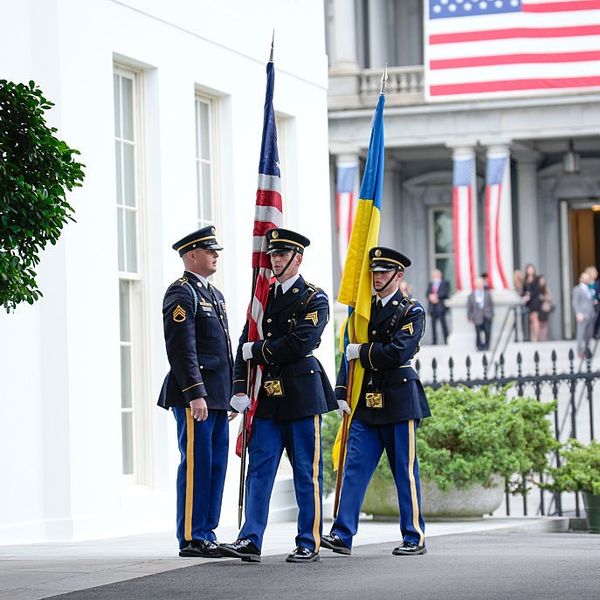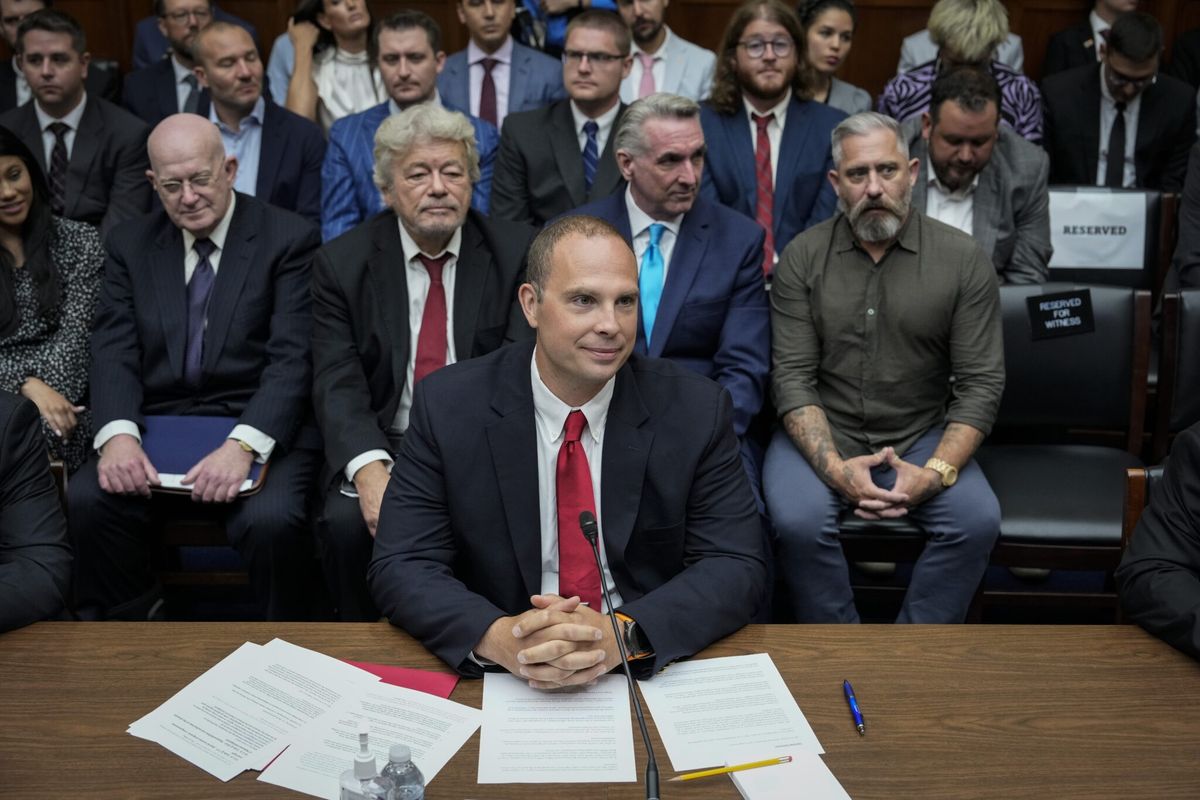OPINION — In Jasionka, Poland, a small town of 2,700 just 60 miles west of the Ukraine border, a little-publicized unit of U.S. soldiers from the 405th Army Field Support Brigade have been using encrypted digital chats and videos to assist Ukrainian Armed Forces (UAF) inside Ukraine in the maintenance and repair of American-provided military equipment.
I first learned of this unusual American military unit, called the Tele-Maintenance and Distribution Cell-Ukraine (RDC-U), and its location from a single paragraph in the Defense Department Inspector General’s Audit of DoD Training Ukrainian Armed Forces, released on June 15.
The paragraph said in part that Ukraine military personnel learn about the Jasionka-based U.S. Army unit’s capabilities and how to contact it in a maintenance briefing they get during training at Grafenwoehr Training Area in Germany from America’s 7th Army Training Command (7th ATC).
It is the 7th ATC training of Ukraine troops by the U.S. Joint Multinational Training Group-Ukraine at Grafenwoehr and Hohenfels Army Barracks that was the focus of the Defense Department IG’s audit.
Want to know what the top minds in cyber are most worried about when it comes to Artificial Intelligence? Save yourself a seat at The Cyber Initiatives Group virtual Summer Summit on Wednesday, June 28th and find out.
The audit found the Army was training the UAF personnel to use U.S. equipment at Grafenwoehr where multiple ranges allow for live-fire exercises of multiple platforms, including artillery and tanks. At Hohenfels, which does not offer live-fire support capability, unit-level simulated combat operations are held.
The audit also found the 7th ATC did not train the Ukrainian troops “to U.S. Army standards or doctrine,” because they were there for only a short time period. For example, the audit pointed out operational training for the Ukraine soldiers on the M119 howitzer ran six days, while similar advanced training for a U.S. Army crewmember lasted seven weeks.
However, the audit said, “7th ATC officials stated they developed programs of instruction to train the UAF on critical tasks and skills needed to operate and maintain the platforms, which enabled the UAF to rapidly return to the fight in Ukraine.”
As is many times the case, reading this 34-page Defense Inspector General audit of training the UAF did not have much new information. In fact, while the audit blacked out the number of Ukrainians that had gone through the process, Joint Chiefs Chairman Gen. Mark Milley the very day the IG report was released, gave a public speech in which he said that since the beginning of the Russian invasion, the U.S. has trained over 11,000 Ukrainians in combined-arms maneuver and staff training. That training effort has resulted in the creation of 12 Ukrainian maneuver battalions of nearly 5,000 operators who are now in the fight, Milley said.
However, reading the audit led me to look for other training operations the U.S. has undertaken with Ukrainians that have not had much publicity.
For example, back in early April 2022, two months after the Russian invasion, General Richard D. Clarke, then-Commander of U.S. Special Operations Command, had testified to Congress that his teams had been training Ukraine Special Forces for eight years. They had begun during the Obama administration after Putin’s forces in 2014 had seized Crimea and territory in the Donbas area in eastern Ukraine.
Clarke had said that first round of training began in 2014 was a “multinational training effort,” with Special Operation Forces from NATO and other European countries joining the U.S. effort. Ukraine’s early success against the February 2022 Russian invasion with hit-and-run special forces tactics showed that early training had worked.
I have now learned, thanks to New York Times stories, that the Army’s 10th Special Forces Group, which had done the original Ukraine special forces training, had by May 2022 established a new 20-nation special forces planning cell in Germany. Its role was to coordinate intelligence information with Ukraine special operations forces and manage the flow of weapons and equipment into Ukraine.
More than a year ago, Army Secretary Christine Wormuth in an appearance before the Atlantic Council, said the 20-nation special operations planning cell helped the Ukrainians “evade the Russians potentially trying to target [logistic] convoys,” in part by providing “intelligence about where the threats to those convoys may be.”
Stories in June and July 2022, from the BBC and Stars and Stripes disclosed more about the 20 nation group that was named as the International Donor Coordination Center (IDCC). The IDCC worked from a fourth floor conference room of Patch Barracks in Stuttgart, Germany where dozens of military personnel from various nations, worked at computers round-the-clock to help deliver weapons to Ukraine.
Every day, a small team from Ukraine, led by a three-star general, set out what his country needed with a list from Stinger missiles and howitzers to drones and long range-artillery. Personnel determined which nations had the relevant resources and in some cases participating nations mixed and matched what was needed. “For example,” according to Stars and Stripes, “on occasion, the British have provided howitzer systems while the Americans supplied the ammunition.”
Subscriber+Members have access to the exclusive intelligence report from former member of CIA’s Senior Intelligence Service Paul Kolbe as he shares perspectives on Ukrainian drone strikes deep inside Russia, Moscow’s Plan B and NATO’s looming challenge ahead of the Vilnius summit.
Once Patch Barracks matched a nation with a weapons system for delivery, a higher-level political decision had to be made to send the weapons. If positive, the U.S. and partner forces decided on routes for getting the approved weaponry or materiel to Ukraine and its troops.
Late last summer, as part of a restructuring, the IDCC was moved from Patch Barracks, Stuttgart, to a hall the size of a gym at Lucius D. Clay Kaserne, an American installation outside Wiesbaden. Clay Kaserne is also home to U.S. Army Europe and Africa Command and the newly established U.S. Security Assistance Group-Ukraine.
The IDCC is currently led by United Kingdom defense officials. It has some 200 personnel from 21 nations, including Ukraine, and continues to coordinate lethal and non-lethal security force assistance to Ukraine from over 50 donor nations.
There have been and still are other training and aid systems helping Ukraine.
Early in the war, an unpublicized, ad hoc team of U.S. Air Force and Air National Guard personnel called Grey Wolf was established at Ramstein Air Base in Germany to provide tactics and techniques to the Ukrainian pilots. The Ukrainian Air Force had earlier trained with NATO members beginning in 2011, and did even more such training after Russia took Crimea in 2014.
“Typically with five to eight [Grey Wolf] members, the team is entirely composed of U.S. Air Force personnel, including fighter pilots, air battle managers, intelligence personnel, and others from specialties that can help,” according to a June 2022 article in Coffee or Die Magazine, a veteran and active-duty news and military culture publication and website, owned by the Black Rifle Coffee Company.
“With input from Ukrainian counterparts, the team passes recommendations up the Department of Defense’s chain of command for ‘low-cost, game-changing’ solutions to Ukraine’s air combat challenges, one team member told Coffee or Die Magazine.” Included are suggestions for equipment deliveries, as well as the transfer of tactics and techniques to Ukrainian air force pilots and support personnel, which can then be immediately used in combat, according to the article.
More recently, mention of Grey Wolf turned up within classified Pentagon documents allegedly leaked by Jack Teixeira, the 21-year-old Massachusetts Air National Guard intelligence analyst, who has pleaded not guilty to charges he retained and transmitted national defense information.
An April 12, 2023 discussion in Aviation Week mentioned a Teixeira-leaked, classified intelligence slide which showed some problems that the Ukrainian Air Force had been experiencing using the American made JDAM-ER guided, stand-off bombs. It said that Grey Wolf had worked out a fix to the arming mechanism so that JDAMs could be used by Ukrainian piloted Sukhoi Su-24 strike bombers. However, when it appeared Russian GPS jamming systems were impacting JDAM accuracy, the Grey Wolf group recommended “Ukrainians disrupt or destroy the Russian GPS jamming systems with ground-based artillery or rocket fire ahead of any future use of JDAMs.”
Back in Jasionka, Poland, the U.S. Army tele-maintenance RDC-U unit originally had 16 chat rooms—one to deal with information about each American delivered weapon system, such as HIMARS Artillery Rocket Launchers, 155mm howitzers, and Javelin anti-tank systems. With the help of Ukrainian linguists, the U.S. maintenance specialists provided assistance to their Ukraine-based counterparts via encrypted digital communications.
As a Defense One source described it, “Ukrainians are going to identify a need, the {U.S.] experts are going to diagnose…what's needed and either walk them through it or put parts on order. And then we use the American supply system to get that part here.”
Last January, when Joint Chiefs Chairman Milley visited Poland and met with Ukraine’s Gen. Valery Zaluzhny, Milley Miley also visited the Jasionka tele-maintenance RDC-U unit, accompanied by an Associated Press (AP) reporter.
On January 28, 2023, an AP story written from an unnamed “military base in southeastern Poland,”: described how “Using phones and tablets to communicate in encrypted chat rooms, a rapidly growing group of U.S. and allied troops and contractors is providing real-time maintenance advice — usually speaking through interpreters — to Ukrainian troops on the battlefield.”
“Because of the sensitivity of the operation,” the AP story said, “the troops there spoke on condition of anonymity under guidelines set by the U.S. military. Reporters also agreed not to reveal the name or location of the base or take photos.”
The AP story then described how the 50 members of the tele-maintenance RDC-U unit would be growing to “150 in the coming weeks, and the number of encrypted chat lines…more than tripled.”
“As they [the RDC-U personnel] look to the future,” the AP story said, “they are planning to get some commercial, off-the-shelf translation goggles. That way, when they talk to each other they can skip the interpreters and just see the translation as they speak, making conversations easier and faster.”
As a sign of another kind of progress, the Jasionka, Poland, tele-maintenance RDC-U unit, which could not have its name or location identified five months ago, was openly identified in the Defense Department IG report released June 15.
Meanwhile, as I found out myself, the U.S., its allies and partners continue to find creative ways to support Ukraine.
The Cipher Brief is committed to publishing a range of perspectives on national security issues submitted by deeply experienced national security professionals.
Opinions expressed are those of the author and do not represent the views or opinions of The Cipher Brief.
Have a perspective to share based on your experience in the national security field? Send it to Editor@thecipherbrief.com for publication consideration.
Read more expert-driven national security insights, perspectives and analysis in The Cipher Brief because National Security is Everyone’s Business












